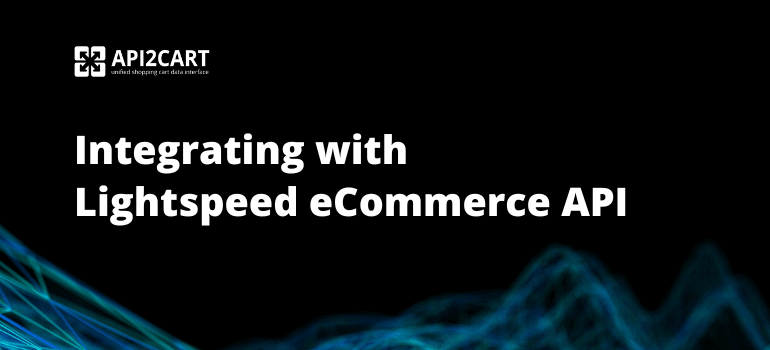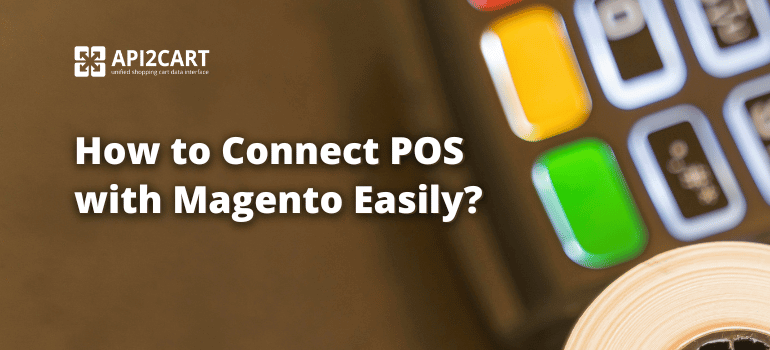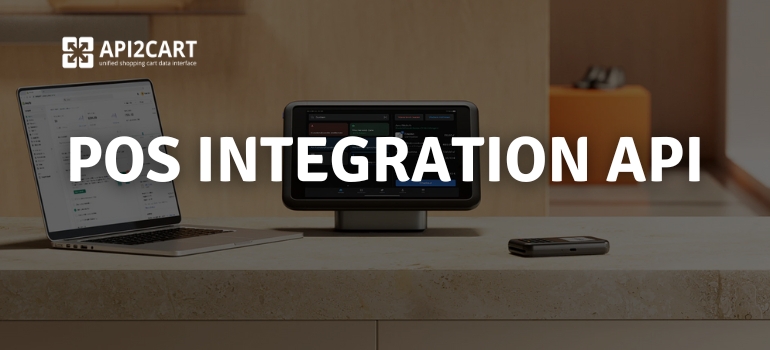
In today's eCommerce world, especially with the ongoing impact of the coronavirus pandemic, it's no longer enough to sell only offline. Customers increasingly prefer online shopping due to its convenience and, in some cases, safety. Retailers are working hard to provide a seamless buying experience across multiple sales channels. This is where Lightspeed POS integration becomes crucial for business owners.
Point-of-sale systems (POS) have become indispensable for merchants who operate both brick-and-mortar and online stores. Lightspeed POS, a powerful software solution, helps bridge these two types of businesses and offers an enhanced customer experience across all platforms. In this article, we'll discuss the essential features of POS software and why Lightspeed API integration is worth considering for your business.
POS Software - Key Features
POS software is a vital digital solution used by brick-and-mortar businesses to process sales. With the evolution of technology, POS systems are now cloud-based, allowing access to sales data and customer transactions from anywhere via an internet connection. Let's take a look at some of the essential features of POS systems for online store owners.
Before we dive into Lightspeed POS integration, here are some of the key features POS systems should offer:
Collect Payments and Track Sales
The ability to process customer transactions has been a core feature of POS systems from the start. As the technology has evolved, this has become the most basic function. POS software allows merchants to process orders and track sales efficiently online and offline.
Support for Multiple Operating Systems
POS systems must be compatible with multiple operating systems, including Android, Windows, Linux, Mac, and iOS, to cater to e-retailers who operate across different platforms.
Real-time Inventory Synchronization
An effective POS system must synchronize inventory in real-time across all eCommerce channels. Manual synchronization across multiple platforms is nearly impossible, but a POS system can automate inventory synchronization while ensuring real-time updates on all sales channels.
Support Multiple Payment Methods
A POS system must support a variety of payment methods commonly used by online shoppers. From credit cards to gift cards and loyalty points, it is important that the POS integrates with the payment systems of the eCommerce platforms, such as Lightspeed ecommerce integration.
Customer Database Analytics and Reporting
A comprehensive POS system can also manage a customer database and generate sales reports, tax reports, and other critical business insights. This can improve customer relationships and enable better business decisions.
POS Software Integration Challenges
High Time and Effort for In-House Integration
To function optimally, POS software must be integrated with multiple eCommerce platforms such as Lightspeed. While Lightspeed API integration offers numerous benefits, it comes with certain challenges. One of the major issues is the significant time and effort required to search, hire, and train developers for the integration process.
Costly Development and Maintenance
Building an in-house integration system also brings heavy costs, including infrastructure setup, developer salaries, and ongoing maintenance. The integration process itself can be expensive, and as Lightspeed’s API evolves, continuous updates will be required.
Difficulty in Managing Constant API Updates
Moreover, keeping up with frequent updates in the Lightspeed API can be time-consuming and complex. This makes Lightspeed POS integration an ongoing challenge for businesses that require consistent maintenance and support.
Lightspeed POS Integration
Despite the challenges, integrating Lightspeed POS is a win-win for eCommerce businesses and POS software providers. Originally designed for physical stores, Lightspeed has expanded into a full-fledged eCommerce platform that supports blogs, upselling, multi-currency, and multi-language capabilities.
Lightspeed now powers over 29,000 online stores and has become especially popular in markets like the Netherlands, the USA, Belgium, and Canada. Here are the benefits you can expect from Lightspeed integration:
- Access to a large customer base.
- Increased sales as your customer reach expands.
- Exposure to new markets and business opportunities.
How to Easily Develop Integration with Lightspeed?

Lightspeed Integration Development
Explore how Lightspeed integration can help your eCommerce software become more competitive.
Rather than developing an in-house integration, you can turn to API2Cart, a cost-effective solution that offers a unified API for integrating POS software with Lightspeed and over 60 other platforms.
API2Cart allows you to integrate your POS software with multiple platforms, saving time, money, and resources on integration development, maintenance, and infrastructure. You can integrate with Lightspeed POS with ease.
Ready to Integrate Lightspeed with Your POS Software?
Try API2Cart for free for 14 days and experience seamless integration with Lightspeed POS and over 60 other platforms. Book a consultation with our experts today!
FAQs
What are the key features of Lightspeed POS for eCommerce businesses?
Lightspeed POS provides essential features for eCommerce businesses, including real-time inventory synchronization, multi-platform compatibility, and support for multiple payment methods. It also integrates with eCommerce platforms, allowing merchants to streamline their operations by automating product updates, order processing, and inventory management across both online and offline stores.
Why should I integrate Lightspeed POS with my SaaS solution?
Integrating Lightspeed POS with your SaaS solution can enhance your eCommerce platform by automating key operations such as inventory synchronization, order fulfillment, and customer engagement. Lightspeed’s integration provides access to a large customer base and new business opportunities, improving sales and operational efficiency across your online and physical stores.
What challenges do businesses face when integrating Lightspeed POS?
While Lightspeed POS offers numerous benefits, integration can be challenging due to the time and cost required for in-house development, managing frequent API updates, and maintaining ongoing compatibility with Lightspeed’s evolving API. Businesses often need specialized developers, which can increase costs and extend the integration timeline.
How can API2Cart simplify Lightspeed POS integration?
API2Cart offers a unified API that connects your POS software with Lightspeed and 60+ other platforms, making integration faster and more cost-effective. With API2Cart, you don’t need to handle the complexity of individual integrations or manage constant updates, allowing you to focus on your core business while maintaining seamless synchronization with Lightspeed POS and other eCommerce plat



